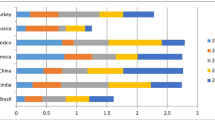Abstract
In a tradable white certificate (TWC) scheme, each certificate issued represents a certain amount of energy saved. Used in conjunction with an energy-saving obligation on certain parties in the energy supply chain and with rules for trading, monitoring and verification established, an efficient market for energy savings in sectors not covered by the European Union (EU) Emissions Trading Scheme can be established. However, a plethora of other mechanisms are already in place to promote a more sustainable use of energy in Europe. This paper analyses the interactions (both potential and realised in existing schemes) between TWCs and other policy instruments including tradable green certificates, the European Union Emissions Trading Scheme, the European Union Energy Performance in Buildings Directive as well as taxes, subsidies and loans. Measures implemented through a TWC scheme that reduce the consumption of electricity can make targets under a tradable green certificate scheme easier to attain. Where a tradable green certificate scheme contains relative targets, the target should be increased to achieve the same absolute amount of renewable power. A TWC scheme can also reduce the number of allowances electricity generators will need to surrender under the EU Emissions Trading Scheme. By reducing the available emission rights in the National Allocation Plans, this effect is possible to counteract.
Similar content being viewed by others
Notes
Further information about the project and its outputs is available on the project website, see www.eurowhitecert.org.
Although it could be argued that it is the price volatility of the EUA over the last 3 years and the price collapse in April 2006 that reduced willingness to invest in end-use savings rather than the EU ETS per se.
Directive 2002/91/EC of the European Parliament and of the Council of 16 December 2002 on the energy performance of buildings.
The Directive concerns the residential sector and the tertiary sector (offices, public buildings etc.). The scope of the provisions on certification does not, however, include buildings such as historic buildings, industrial sites etc.
References
Child, R., Cohen, R., & Masero, S. (2006). White certificates & potential interactions with the energy performance in buildings directive. EuroWhiteCert Project, Work Package 5, Annex 8 Report.
Council of the European Union (2007). Council conclusions on review of the European union emissions trading scheme. 2812th Environment Council meeting, Luxembourg, 28 June 2007.
Department for Environment, Food & Rural Affairs, UK. (2007). Carbon emissions reduction target April 2008 to March 2011: Consultation proposals. Retrieved 10 July 2007 from http://www.defra.gov.uk/corporate/consult/cert2008-11/consultation.pdf.
EPBD Building Platform (2007). Implementation of the European performance of buildings directive: Country reports. Retrieved 17 September from http://www.buildingsplatform.eu/.
Gaudioso, D. (2006). White certificate schemes and European emissions trading system. EuroWhiteCert Project, Work Package 3.1 Task report.
Gaudioso, D., Langniss, O., & Klink, J. (2006). ESCOs in the Italian and UK energy efficiency schemes. EuroWhiteCert Project, Work Package 5, Annex 5 Report.
Harrison, D., Sorrell, S., Radov, D., Klevnas, K., & Foss, A. (2005). Interactions of the EU ETS with green and white certificate schemes. Report to the European Commission Directorate-General Environment by NERA Economic Consulting.
Langniss, O., & Klink, J. (2006). White certificate schemes and (national) green certificate schemes. EuroWhiteCert Project, Work Package 3.2 Task Report.
Langniss, O., & Preatorius, B. (2006). How much market do market-based instruments create? An analysis for the case of “white” certificates. Energy Policy, 34, 200–211.
Monjon, S. (2006). Interactions between tradable white certificates and tax credits—the French case. EuroWhiteCert Project, Work Package 5, Annex 7 Report.
Oikonomou, V. (2004). White and green—a qualitative analysis of white, green certificates and EU CO2 allowances, phase II of the White and Green project, report prepared by Vlasis Oikonomou (Utrecht University), with contributions from Martin Patel (Utrecht University), Luis Mundaca (Lund University), Thomas Johansson (Lund University), Ugo Farinelli (Lund University), Utrecht University, Copernicus Institute, August 2004.
Perrels, A., Oranen, A, & Rajala, R. (2005). White certificates and interactions with other policy instruments. EuroWhiteCert Project, Work Package 3.3 Task report.
Voogt, M., Luttmer, M., & de Visser, E. (2006). Review and analysis of national and regional certificate schemes. EuroWhiteCert Project, Work Package 2 Task Report.
Author information
Authors and Affiliations
Corresponding author
Rights and permissions
About this article
Cite this article
Child, R., Langniss, O., Klink, J. et al. Interactions of white certificates with other policy instruments in Europe. Energy Efficiency 1, 283–295 (2008). https://doi.org/10.1007/s12053-008-9025-7
Received:
Accepted:
Published:
Issue Date:
DOI: https://doi.org/10.1007/s12053-008-9025-7




